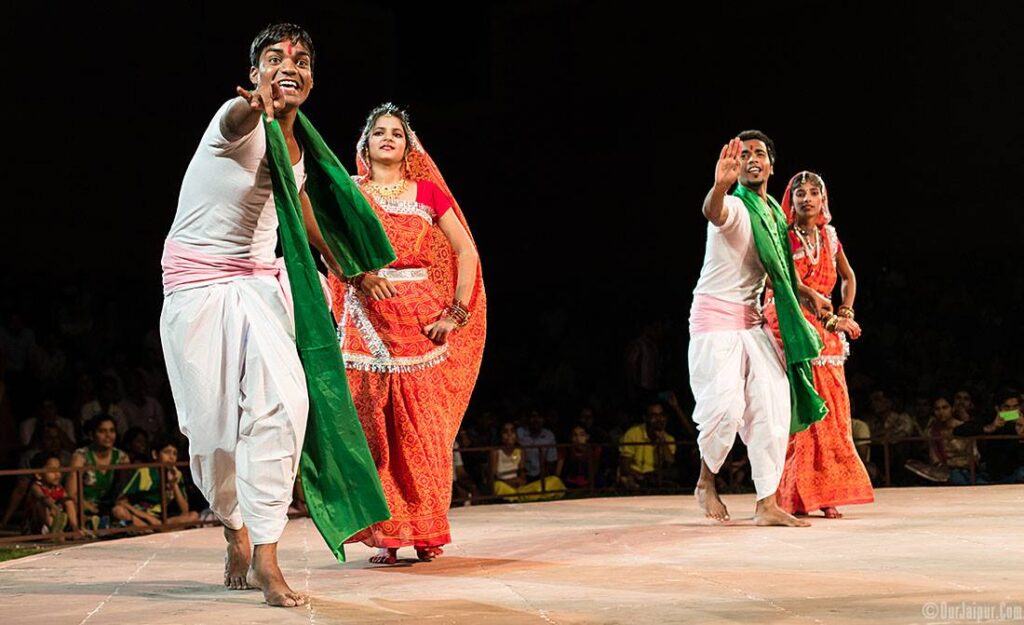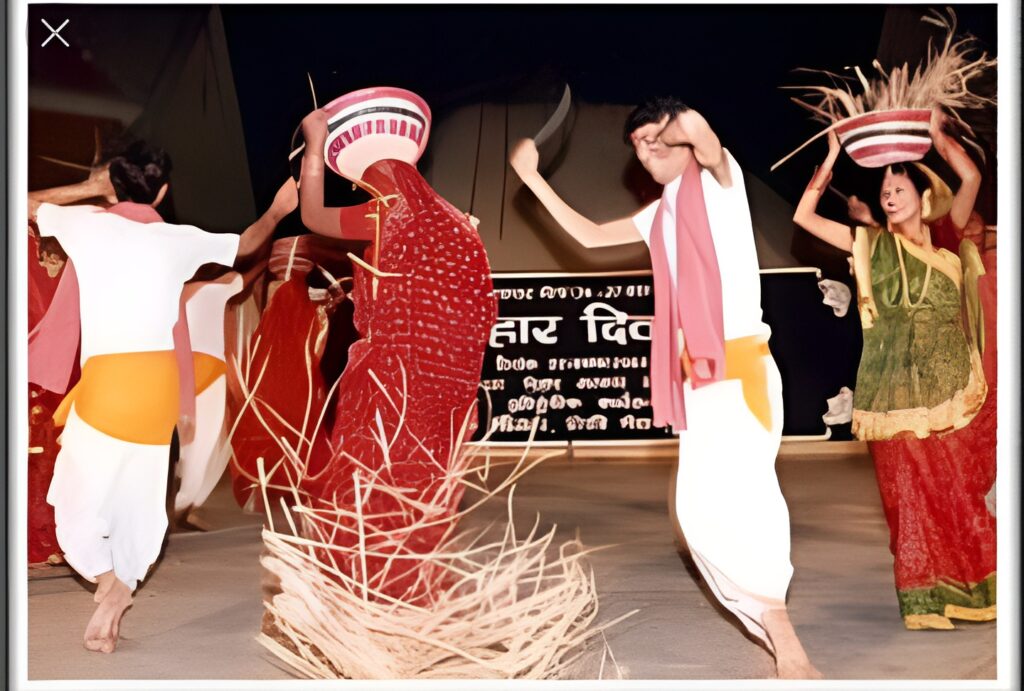Currently Empty: ₹0.00
Drama & Theatre
Bihar Theatre: Rich Culture & Classic Performances

Enriched by its cultural heritage, Bihar carries the living history of theatre—a reflection of a vibrant past of changing social dynamics and rural life. In fact, it would not be wrong to say that Bihar theatre is a barometer of the region’s folk culture and has played a great role in communication with the help of social messages through entertainment. Bihar has given birth to special styles of theatre for centuries. This blog will discuss the history, major forms of theatre, themes, and relevance of Bihar’s theatre to showcase cultural and social importance.
Historical Overview The theatre of Bihar derives from ancient traditions of storytelling, music, and dance. In the state, like in most of them, folk theatre is still a great medium of entertainment, social comment, and mass education for the common people, none excluded, even rural folks. Unlike the more formalized urban theatres, Bihar’s theatre was of village origin, fusing very closely with the festivals, fairs, and local events.
Some plays also showcased moral, religious, and social messages with entertainment, and people attended the plays.
The theatre in Bihar was more relevant during colonial times, as the rural people had an upsurge of social and political consciousness. The artists used to use it to condemn British rule, caste oppression, and other such vices prevalent in the society, as it played a dual role in entertainment and activism. With time having passed, though, the theatre tradition of the state has evolved; still, the masses can relate to it because the everyday problems constitute a core part of it.
Various Popular Forms of Theatre in Bihar:
- Bidesia
Probably the most representative and one of the most popular genres in Bihar, Bidesia originally came as a folk form of theatre from Bhojpuri-speaking Bihar. Bhikhari Thakur—one of whose epithets was indeed “Shakespeare of Bhojpuri”—created and popularized it. His works in the early 20th century brought Bidesia into wide awareness, after which it became a staple of Bihar’s cultural life. Essentially, Bidesia is all about the problems of migration, social inequality, and the fragile position of the rural. Bidesia portrays an emotional struggle between those who trek out of their villages to graze livestock and those left behind. Bidesia also is known as “the one who goes abroad” or simply a person who migrates.
This theme touched a raw nerve amongst the people of Bihar because economic migration was and is such a grim reality for the state.

Features of Bidesia:
Emotion: Bidesia is an emotional deep contour, the portrayal of the pain of separation or difficulties in migration and hardships with adjustment in the change of environment.
Social Commentary: Casteism, economic divisions, and gender discrimination are highlighted in Bidesia using a technique of satire-drama.
Music and Dance: One of the most important points in Bidesia is that it uses folk music and dance, attired with colorful dresses, rhythmic beats, and gesticulations that make it a seducing art.
Characters: The characterization is exaggerated for the effect of drama with humor and pathos being combined for the conveyance of serious messages.
Some of Bhikhari Thakur’s most well-known plays, such as Bidesia, Gabarghichor, and Beti Bechwa, are still performed throughout the state and beyond; in that sense, his spirit remains very much alive.
- Jat-Jatin
Jat-Jatin is another major genre of folk theatre in Bihar, which is generally performed during the slack months of the rainy season when work in the fields is suspended. This theater form elaborates the bond between a husband and his wife, Jat, and Jatin respectively, symbolizing toils and pleasures in rustic life.

Themes and Characteristics:
Love and Marital Conflict-A story portraying the conflict cases of Jat and Jatin only, expresses poverty, separation, and domestic life in a much lighter but meaningful manner.
It involves folk songs that illustrate the emotional and pragmatic difficulties of diversified couples who are living in the countryside.
Earlier, the Jat-Jatin performances were linked to seasons, more precisely the monsoon season, and reflected the anxieties and hopes of the farmer.
Social Issues and Humor: If humor is the prime engagement tool in the serial, Jat-Jatin does not stay behind in soaking social issues of poverty, migration, and survival.
- Bhikhari Thakur Theatre
If Bidesia was Bhikhari Thakur’s best creation, his contribution to Bihar theatre overshot it. Thakur’s kind of theatre was never meant for any form of entertainment, but rather for social purposes. His plays dealt with core social themes, like women’s subjugation, dowry, and caste-based discrimination.

Plays of Bhikhari Thakur :
Bidesia: Focuses on the consequences of migration on rural families and particularly on women remaining alone.
Beti Bechwa: Criticizes the dowry system and the treatment of women as commodities in marital arrangements.
Gabarghichor: A satire on the conventional caste system and its oppressive structures.
Thakur is still spoken of with authority in Bihar, and as a mark of respect for the work he did for folk theatre and social reform, his plays are still enacted.
Thematic and Social Relevance of Bihar’s Theatre
Theater in Bihar has stayed closely related to the social realities of rural living, especially its folk forms: Bidesia and Jat-Jatin. Among the varied themes presented within the performance, one can count themes such as migration and economic hardship, gender inequality, and caste discrimination. Financial migration is one of the biggest themes of theatres in Bihar. Traditionally, people of Bihar migrate either to other parts of India or abroad in search of work. Such theatre, like Bidesia, talks eloquently about the pain of separation and the societal issues that follow. At various times, the caste issue has been criticized in the theater of Bihar, bashing the rigid hierarchies that rule rural life. Performers resort to satire and drama to voice the injustices of the marginalized.
Thematically Relevant: Gender roles and empowerment – In the majority of plays, particularly those by Bhikhari Thakur, the theme illustrated pertains to female subjugation in a conventional, patriarchal, male-dominated society. Doury, widowhood, and discrimination among genders are staged to promote higher awareness and initiate debate.
These themes make sure that the theatre of Bihar does not stand as a source of entertainment but a platform through which social reflection and change could be introduced.
Contemporary Influence and Revitalization Efforts Of late, it is being noticed that interest in preserving and promoting the folk traditions of theater in Bihar is being revived. These forms have also combined with the modern style of performance to inspire contemporary theater practitioners. Besides, many cultural organizations and some government agencies have been engaged in this job to keep the theater of Bihar vibrant and relevant to modern times. A number of festivals, workshops, and performances further help introduce the rich cultural heritage of Bihari theatre. The old performances continue unchecked by institutions, such as Bihar Art Theatre and other local groups, which ensure they are geared and changed with regard to presentation for the modern audience, their essence retained. Conclusion Theatre probably is one of the strongest reflections of socio-cultural life in Bihar. It is, therefore, ageless and contemporary even today, as forms like Bidesia and Jat-Jatin epitomize experience and struggle during their rural moments of joy. Since these traditions keep transforming themselves, they shall stand testimony to the survival of storytelling for entertainment and ushering in social change in Bihar. The theatre is the only preserver left to transmit the essence of Bihar’s culture, so that the voice of the people remains distinctly heard at the national and global level.




